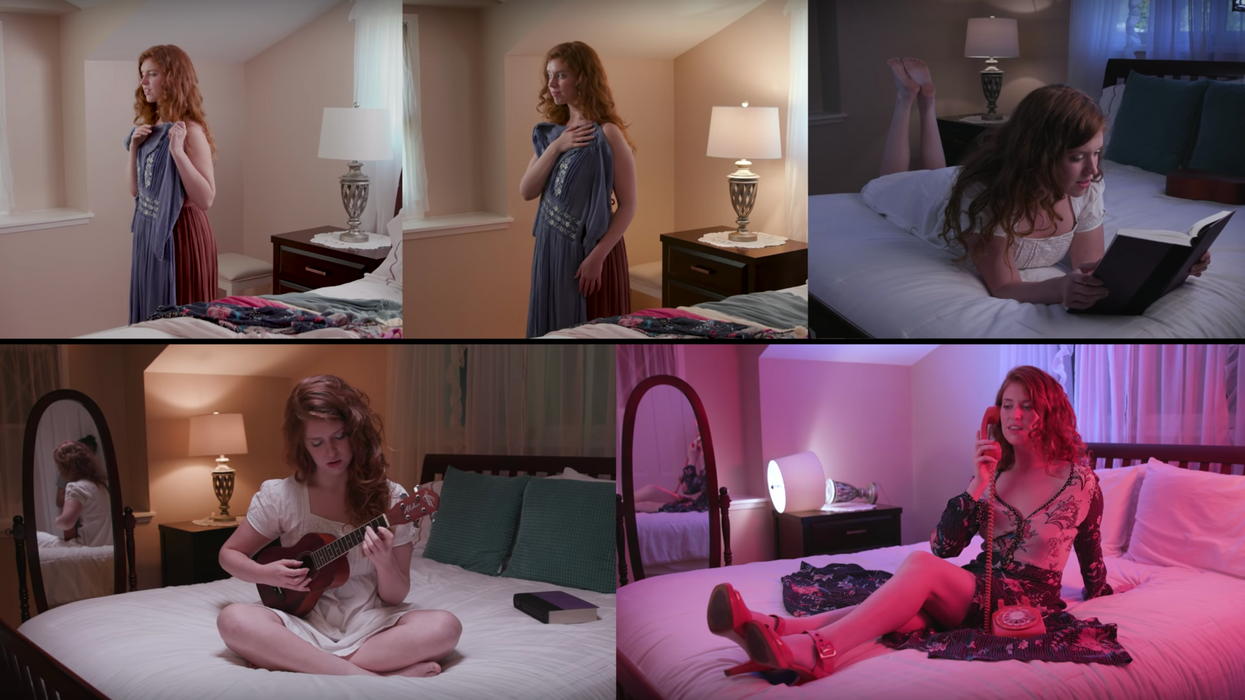5 Setups, 1 Room: How to Create the Most Common Cinematic Lighting Setups
This tutorial takes you through some of the most essential lighting setups step-by-step.

Lighting is one of the most complicated and confusing aspects of cinematography, but even the most inexperienced filmmakers can manage to create the lighting setups most commonly used in film—with a little guidance, of course. In this tutorial, Jay P. Morgan of The Slanted Lens walks you through five different lighting setups step-by-step, including daylight, moonlight, day-for-night, afternoon light, as well as a unique stylized look that you can play around with on your own project. Check it out below:
Morgan does a great job (as always) of explaining the why's behind the how's. Why would you need to stick a light next to a window to mimic the light coming through a window? Isn't that redundant? No! That extra light helps you avoid blowing out the highlights, friend. And many times, it doesn't dawn on new filmmakers to replace the bulbs in practical lights with more powerful ones, but that technique allows you to use practicals in a more dynamic, advantageous way.
Other than learning lighting techniques, the other major hurdle for beginner filmmakers is actually acquiring lighting equipment, a real challenge for many of us who can barely afford the good kind of ramen (not Maruchan or Nissin, y'all). For this tutorial, Morgan uses some light panels from Intellytech called LiteCloth, which are most likely too big of an investment for those who are just starting out. (The 1x3 LC-120 starts at $900 and the rest goes up from there.) However, you don't necessarily need expensive lighting gear to achieve the same look. In fact, there are plenty of affordable LED light panels out there, as well as small but mighty handheld LED lights that might provide enough output for your project, especially if you shoot on a camera that does well with low-light situations (like the a7S II, D5, and GH5).
Caleb Pike of DSLR Video Shooter is kind of the unofficial guru on inexpensive LED lights that work well for filmmaking, and he has tested and talked about a number of different units, including the Aputure M9 ($45), the Viltrox L132T ($37), the Aputure H198 ($58), and the Came-TV Boltzen B30S ($328). However, if you're looking for something flexible like the LiteCloth, there are several cheap alternatives that you can get for less than $200, including a 1x1 and a 1x2 from Travor, as well as the RX-12 and RX-18 from Falcon Eyes.
What inexpensive LED lights do you use? Do you have any nifty lighting setup tricks? Let us know down in the comments.
Source: The Slanted Lens











